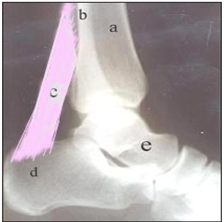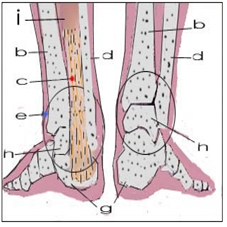발가락으로 걷기(발가락 걸음), Toe walking


발가락으로 걷기를 “소아, 청소년 건강상담“에 들어온 질문을 통해서 설명합니다.
|
다음은 “발가락으로 걷기”에 관한 인터넷 소아청소년 건강상담 질의응답의 예 입니다. |
Q&A. 발가락으로 걷기
Q.
19개월된 남자아이입니다. 걸음마를 시작할 때부터 뒤꿈치를 들고 걷더니 지금은 뛰어다닐 때도 뒤꿈치를 들고 다니는데요. 집에서도 그렇고 신을 신고 밖에 나가서도 그럽니다.
가끔 제대로 걷습니다. 어제부터는 제대로 걸을 때는 발가락을 안으로 굽히고 조금 불편하게 걸어요. 다친 데가 있나 살펴보았는데 그렇지는 않고요. 혹시나 뒤꿈치를 들고 걸어 다녀서 뼈에 이상이 생긴 건 아닌지. 아이의 성장에 문제는 없는 건지 걱정입니다.
A.
안녕하세요. 좋은 질문해 주셔서 감사합니다.
자녀의 나이, 성별, 과거와 가족의 병력, 진찰소견, 임상검사 결과 등 많은 정보가 있으면 더 좋은 답변을 드릴 수 있습니다. 주신 정보를 참작해 답변을 드립니다.
저는 소아과 진료를 하면서 발의 앞쪽 부분 (발가락 있는 발 부분)으로 걷는 영유아들 4~5명 정도를 봤습니다.
그들 전부 아무 치료 없이 다 자연히 잘 나았습니다.
자녀가 걷는 것과 같이 걷는 증상 징후를 영어로 Toe walking(발가락 걷기)이라고 합니다.
한글로 번역하면 “발가락 걷기“라고 할 수 있겠지요.
“발가락으로 걷기“를 “발 앞쪽 부분으로 걷기“라고 표현할 수 있습니다.
아랫다리에 있는 하퇴 삼두 근육 이상이 있거나, 그 근육이 과잉으로 작용하거나,
아랫다리, 발목 근육, 신경 등에 어떤 이상으로 비정상적인 발가락 걷기를 할 수 있고
아킬레스 건이 짧거나 과잉작용을 할 때 발가락 걷기를 할 수 있습니다.
아무런 이상이 없이 발가락 걷기를 할 수 있습니다. 이런 발가락 걷기를 생리적 발가락 걷기라고 합니다.
앞서 말씀드린바와 같이 생후 3세 이전에 있는 발가락 걷기의 거의는 자연적으로 없어지고 정상적으로 걸음을 걷는 것이 보통입니다. 이런 발가락 걷기를 생리적 발가락 걷기라고 합니다.
생리적 발가락 걷기는 생후 12~24개월 사이에 나타났다가 3세 이전 거의 없어지는 것이 보통입니다.
그들의 일부는 생후 정상적으로 걷기 시작하고 그 후 얼마동안 정상으로 걷다가 생리적 발가락 걷기로 걷기도 하고 일부는 아예 처음부터 발가락 걷기로 걷기도 합니다.
어떤 원인으로 비정상적으로 발가락 걷기를 할 수 있습니다.
그 때문에 우선 소아청소년과에서 진찰을 받고 발에 어떤 이상이 있는지, 아킬레스 건이 비정상적으로 더 짧은지, 그 부위 근육에 어떤 이상이 있는지, 그 발이 있는 쪽 다리의 신경이 정상인지, 성장발육이 정상인지 등을 알아보아야 합니다.
하퇴 삼두 근육이나 건이 과잉작용을 하는지, 아킬레스 건이 비정상으로 더 짧은지 확인해 보아야 합니다.
그 다리에 있는 근육, 신경, 건 등 이상으로 발가락 걷기를 하면 그 원인과 정도에 따라 치료를 할 수 있습니다.
그러나 일반적으로 생후 3세 될 때까지 기다려 보는 것이 보통이다.
때로는 석고 붕대(캐스트)고정 치료를 하기도 하고 손으로 주물러 짧은 아킬레스 건을 늘리는 치료도 하나 일반적으로 그런 치료를 하지 않고 자연히 낫는 경우가 대부분이다.
우선 소아청소년과에서 진찰을 받고 필요에 따라 소아 정형외과 전문의의 의견을 들어보십시오.
그리고 “발가락을 안으로 굽히고” 걷는 것에 관한 정보로 무지내반을 참조하시고 또 소아과에 문의하시기 바랍니다.
Toe walking


I explain walking on toes through the questions asked in “Children’s and Adolescents’ Health Counseling”.
The following is an example of Q&A for health counseling for children and adolescents on the Internet about “walking on toes”.
Q&A. walking on toes
Q. He is a 19 month old boy. When I started to walk, I walked with my heels, and now I carry my heels when I run. Whether at home or outside wearing shoes. Sometimes I walk properly. From yesterday, when I walk properly, I bend my toes inward and walk a little uncomfortable.
I checked to see if there were any injuries, but it wasn’t.
I wonder if there is something wrong with my bones when I walk with my heels up. I am worried that there is no problem with the growth of the child.
A. Hello. Thanks for the nice question.
We can give you a better answer if you have a lot of information such as the child’s age, gender, past and family medical history, examination findings, and clinical test results. We will respond based on the information you have provided.
During my pediatric practice, I saw about 4 or 5 infants and toddlers walking on the front part of the foot (the part of the foot with the toes). All of them healed spontaneously without any treatment.
Symptoms of walking, such as your child’s walking, are called toe walking in English.
Translated into Korean, it could be called “walking on toes.”
“Walking on toes” can be expressed as “walking with the forefoot”. There is an abnormality in the triceps muscle in the lower leg, or the muscle is working excessively, Abnormal toe walking due to some abnormality in the lower leg, ankle muscles, nerves, etc.
Toe walking may occur when the Achilles tendon is short or overactive. I can walk on my toes without any problems. This kind of toe walking is called physiological toe walking
. As mentioned earlier, most of the toe walking before 3 years of age disappears spontaneously, and it is normal to walk normally. This kind of toe walking is called physiological toe walking. Physiological toe walking usually appears between 12 and 24 months of age and almost disappears before 3 years of age.
Some of them begin to walk normally after birth, then walk normally for a while, then walk to physiological toe walking, and some even walk to toe walk from the beginning. Some causes can cause abnormal toe walking.
For that reason, first check with the Department of Pediatrics to see if there is any abnormality in the foot, if the Achilles tendon is abnormally shorter, if there is any abnormality in the muscle in that area, if the nerve in the leg where the foot is located is normal, and if growth and development are normal.
You need to know your back. You should check to see if the triceps muscle or tendon is overworking, or if the Achilles tendon is abnormally shorter. If you walk toe with an abnormality in the muscles, nerves, or tendons in the leg, treatment can be performed depending on the cause and severity. However, it is common to wait until the age of 3 years.
Sometimes, a plaster bandage (cast) fixation treatment is used, and there is a treatment that stretches the short Achilles tendon by hand rubbing, but in general, it heals spontaneously without such treatment.
First, see a pediatrician and, if necessary, hear from a pediatric orthopedic surgeon. Also, see varus varus for information about walking with “toe inward” and contact your pediatrician.
출처 및 참조 문헌 Sources and references
- NelsonTextbook of Pediatrics 22ND Ed
- The Harriet Lane Handbook 22ND Ed
- Growth and development of the children
- Red Book 32nd Ed 2021-2024
- Neonatal Resuscitation, American Academy Pediatrics
- Quick Reference to Pediatric Emergencies, Delmer J. Pascoe, M.D., p.160-161
- Emergency Pediatrics, A guide to ambulatory care, 5th edi. Roger M. Barkin, Peter Rosen, p.536-537
- Emergency care and transportation of the sick and injured,3rd edition, American Academy of orthopedic surgeons.p.129, 275-276
- www.drleepediatrics.com 제1권 소아청소년 응급 의료
- www.drleepediatrics.com 제2권 소아청소년 예방
- www.drleepediatrics.com 제3권 소아청소년 성장 발육 육아
- www.drleepediatrics.com 제4권 모유,모유수유, 이유
- www.drleepediatrics.com 제5권 인공영양, 우유, 이유식, 비타민, 미네랄, 단백질, 탄수화물, 지방
- www.drleepediatrics.com 제6권 신생아 성장 발육 육아 질병
- www.drleepediatrics.com제7권 소아청소년 감염병
- www.drleepediatrics.com제8권 소아청소년 호흡기 질환
- www.drleepediatrics.com제9권 소아청소년 소화기 질환
- www.drleepediatrics.com제10권. 소아청소년 신장 비뇨 생식기 질환
- www.drleepediatrics.com제11권. 소아청소년 심장 혈관계 질환
- www.drleepediatrics.com제12권. 소아청소년 신경 정신 질환, 행동 수면 문제
- www.drleepediatrics.com제13권. 소아청소년 혈액, 림프, 종양 질환
- www.drleepediatrics.com제14권. 소아청소년 내분비, 유전, 염색체, 대사, 희귀병
- www.drleepediatrics.com제15권. 소아청소년 알레르기, 자가 면역질환
- www.drleepediatrics.com제16권. 소아청소년 정형외과 질환
- www.drleepediatrics.com제17권. 소아청소년 피부 질환
- www.drleepediatrics.com제18권. 소아청소년 이비인후(귀 코 인두 후두) 질환
- www.drleepediatrics.com제19권. 소아청소년 안과 (눈)질환
- www.drleepediatrics.com 제20권 소아청소년 이 (치아)질환
- www.drleepediatrics.com 제21권 소아청소년 가정 학교 간호
- www.drleepediatrics.com 제22권 아들 딸 이렇게 사랑해 키우세요
- www.drleepediatrics.com 제23권 사춘기 아이들의 성장 발육 질병
- www.drleepediatrics.com 제24권 소아청소년 성교육
- www.drleepediatrics.com 제25권 임신, 분만, 출산, 신생아 돌보기
- Red book 29th-31st edition 2021
- Nelson Text Book of Pediatrics 19th- 21st Edition
- The Johns Hopkins Hospital, The Harriet Lane Handbook, 22nd edition
- 응급환자관리 정담미디어
- Pediatric Nutritional Handbook American Academy of Pediatrics
- 소아가정간호백과–부모도 반의사가 되어야 한다, 이상원 저
- The pregnancy Bible. By Joan stone, MD. Keith Eddleman, MD
- Neonatology Jeffrey J. Pomerance, C. Joan Richardson
- Preparation for Birth. Beverly Savage and Dianna Smith
- 임신에서 신생아 돌보기까지. 이상원
- Breastfeeding. by Ruth Lawrence and Robert Lawrence
- Sources and references on Growth, Development, Cares, and Diseases of Newborn Infants
- Emergency Medical Service for Children, By Ross Lab. May 1989. p.10
- Emergency care, Harvey Grant and Robert Murray
- Emergency Care Transportation of Sick and Injured American Academy of Orthopaedic Surgeons
- Emergency Pediatrics A Guide to Ambulatory Care, Roger M. Barkin, Peter Rosen
- Quick Reference To Pediatric Emergencies, Delmer J. Pascoe, M.D., Moses Grossman, M.D. with 26 contributors
- Neonatal resuscitation Ameican academy of pediatrics
- Pediatric Nutritional Handbook American Academy of Pediatrics
- Pediatric Resuscitation Pediatric Clinics of North America, Stephen M. Schexnayder, M.D.
-
Pediatric Critical Care, Pediatric Clinics of North America, James P. Orlowski, M.D.
-
Preparation for Birth. Beverly Savage and Dianna Smith
-
Infectious disease of children, Saul Krugman, Samuel L Katz, Ann A.
- 제4권 모유, 모유수유, 이유 참조문헌 및 출처
- 제5권 인공영양, 우유, 이유, 비타민, 단백질, 지방 탄수 화물 참조문헌 및 출처
- 제6권 신생아 성장발육 양호 질병 참조문헌 및 출처
- 소아과학 대한교과서
-
제16권 소아청소년 정형외과 및 스포츠 질환 참조문헌 및 출처
-
Rheumatic fever Angelo Taranta, Milton Markowitz
-
Rheumatic fever Milton Markowitz and Gordis
-
Pediatric orthopedics Tachdjan
-
Gray’s Anatomy
Copyright ⓒ 2014 John Sangwon Lee, MD., FAAP
“부모도 반의사가 되어야 한다”-내용은 여러분들의 의사로부터 얻은 정보와 진료를 대신할 수 없습니다.
“The information contained in this publication should not be used as a substitute for the medical care and advice of your doctor. There may be variations in treatment that your doctor may recommend based on individual facts and circumstances.
“Parental education is the best medicine.